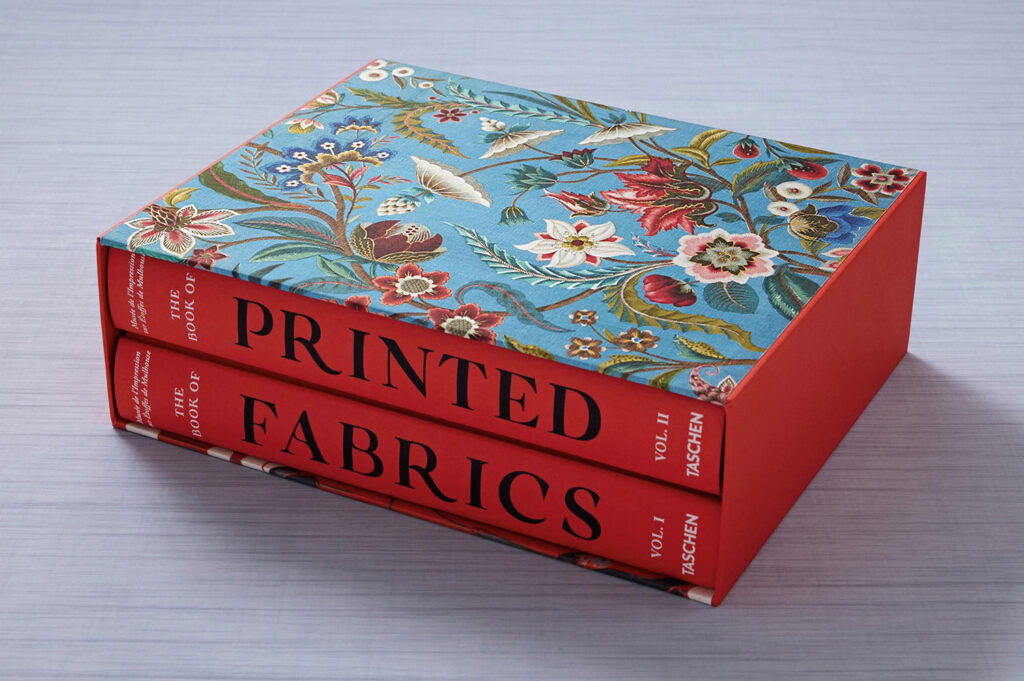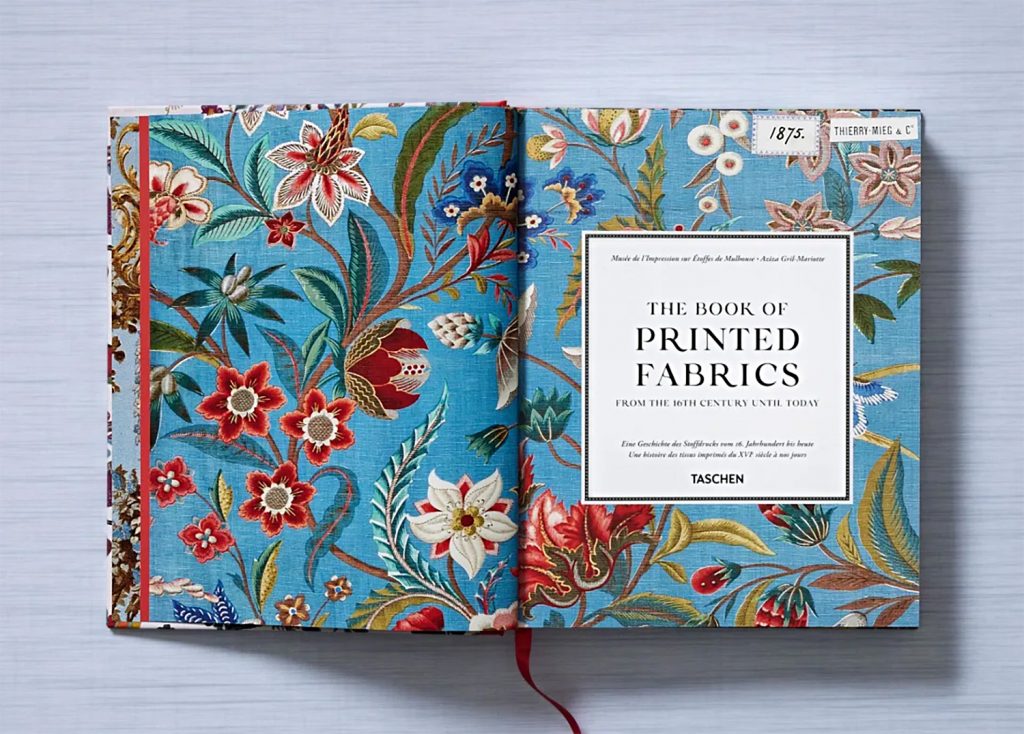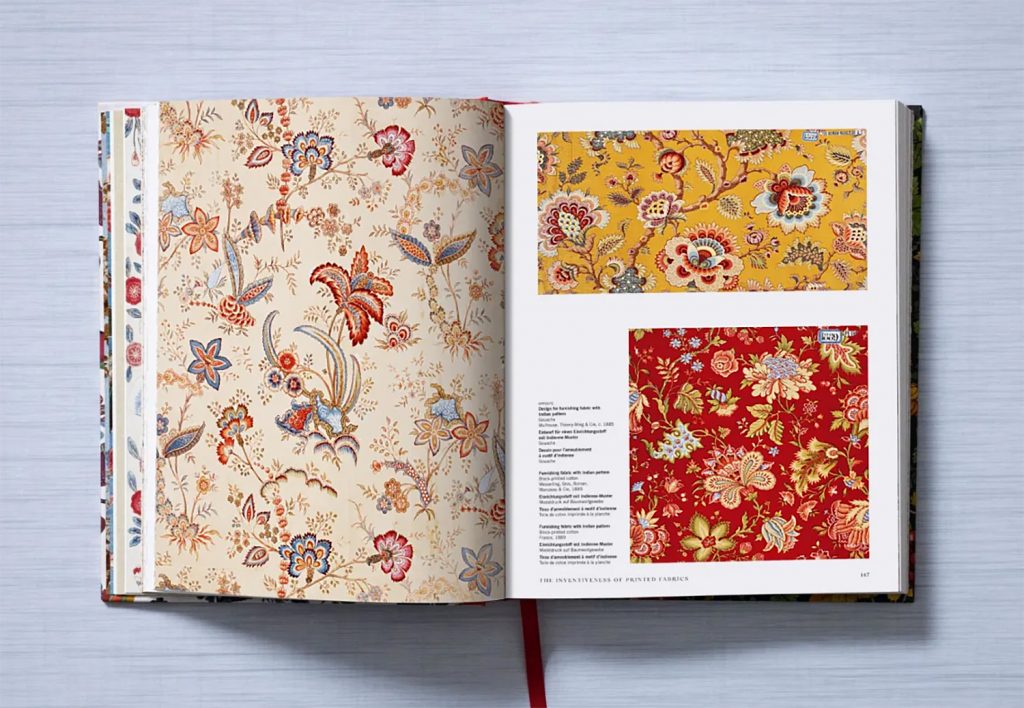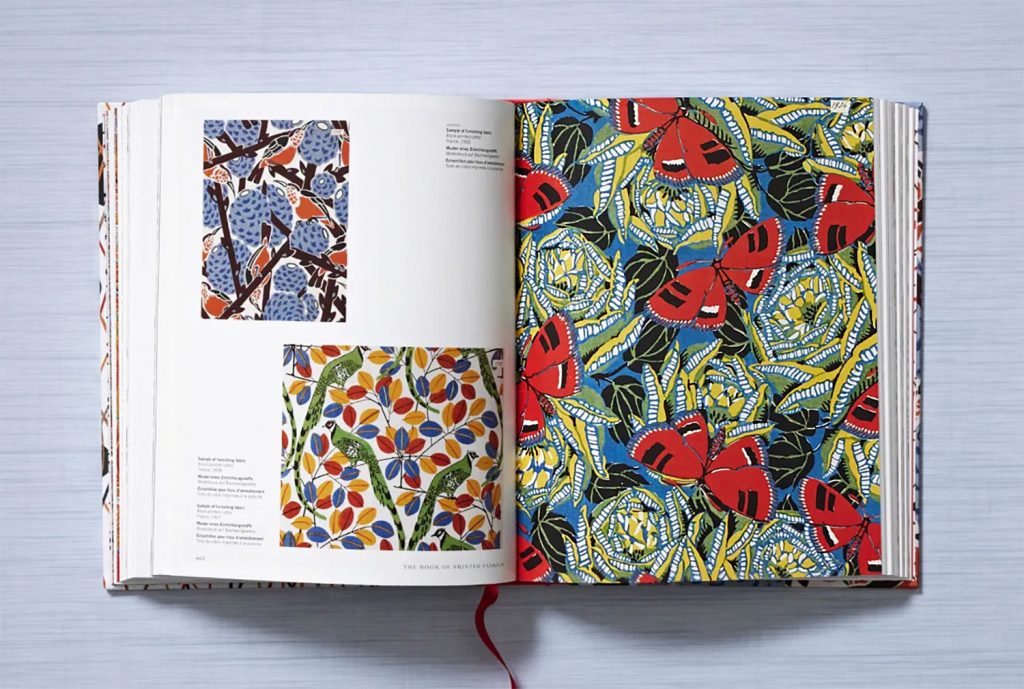
Photo: Taschen Verlag
Textile printing as the origin of industrial fashion
The cradle of French haute couture is not, as one might expect, in the vibrant fashion metropolis of Paris, but in the tranquil town of Mulhouse in south-east France. Since its opening in 1955, the Musée de l’Impression sur Étoffes has been an almost inexhaustible treasure trove for lovers of textile design. Based on the museum’s collections, which date back to 1830, the renowned art historian Aziza Gril-Mariotte traces the history of European textile printing from the first imports from India, Persia and the Levant in the 17th century to the present day in a lavishly designed double volume.

Photo: Taschen Verlag
Oriental influences and European adaptations
One focus of the two volumes is on the presentation of how the colourful cotton fabrics, the so-called Indiennes, with their floral patterns, exotic plants, animals and geometric shapes typical of Indian and oriental textile art, were adopted and further processed on the European market despite an initial ban by King Louis XIV in France in 1686. Gril-Mariotte vividly explains the technical challenges and innovations associated with the introduction of the necessary printing techniques, such as the use of mordants and the development of new dyes such as vat blue and madder red, in order to be able to reproduce the colours of Indian fabrics in Europe.

Photo: Taschen Verlag
Training and innovation in textile design
The production of the elaborately printed fabrics required close co-operation between artistic and technical professions. Draughtsmen, engravers and colourists were highly specialised professionals who made an indispensable contribution to the emerging textile industry. As production increased, the standardised training of skilled workers at art academies and schools of applied arts became ever more important. In 1766, the École royale gratuite de dessin was founded in Paris under the direction of the renowned floral draughtsman Jean-Jacques Bachelier in order to ensure continuous innovation and quality in the textile industry.

Photo: Taschen Verlag
A comprehensive source on the history of textile printing
The two almost 900-page volumes on the history of textile printing are the result of a long-standing collaboration between Taschen Verlag and the former director of the Musée de l’Impression sur Étoffes in Mulhouse, Aziza Gril-Mariotte. While the first volume deals with the oriental origins of textile printing and examines innovations such as the Toile de Jouy, the second volume uses numerous examples to trace the inventiveness of textile design in the 19th and 20th centuries. The publication provides comprehensive historical and technical information on the development of textile printing and its cultural and industrial significance, making it a fundamental source for understanding today’s fashion industry.
Data
| Title | The Book of Printed Fabrics – From the 16th century until today (Original title) |
| Editor | Aziza Gril-Mariotte |
| Publisher | Taschen Verlag |
| Cover | Hardcover, 2 volumes in slipcase |
| Pages | 888 pages, with numerous colour illustrations |
| Language | German, English, French |
| Dimensions | 24.3 x 30.4 cm |
| ISBN | 978-3-8365-6276-8 |
| Price | 150 € |
Further information
Further information on the book “The Book of Printed Fabrics” (Advertising) can be found on the Taschen-Verlag website.
A selection of fabric samples is presented on the website of the Musée de l’Impression sur Étoffesi (EN).
Compliance
The book was kindly made available to us by the publisher. The presentation and rating of HYPERMADE remains independent of this and is based solely on the content of the book.
